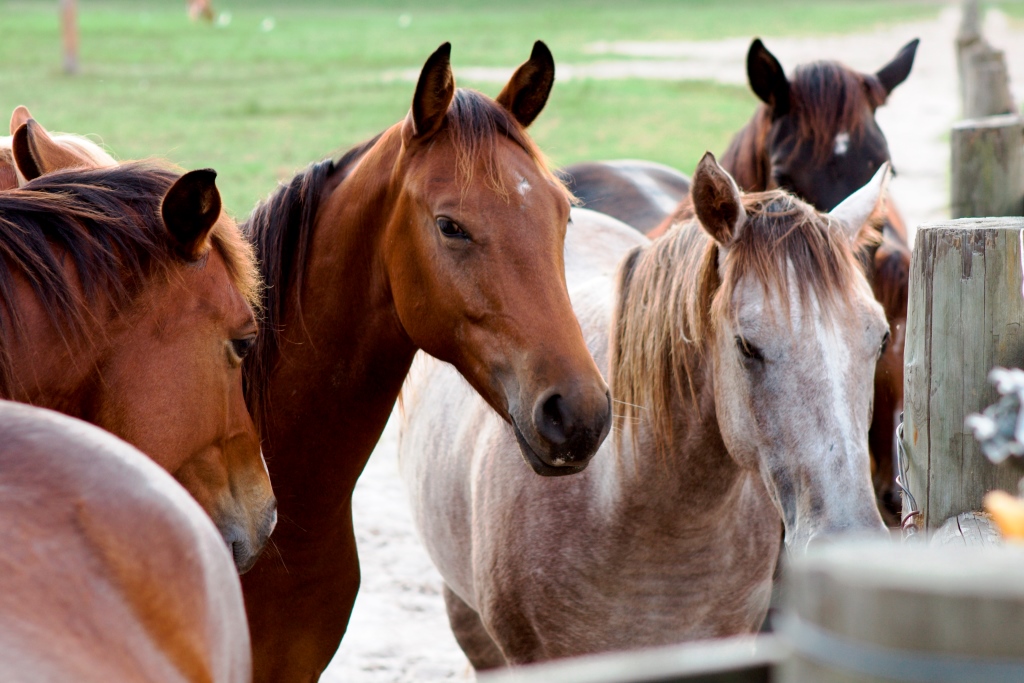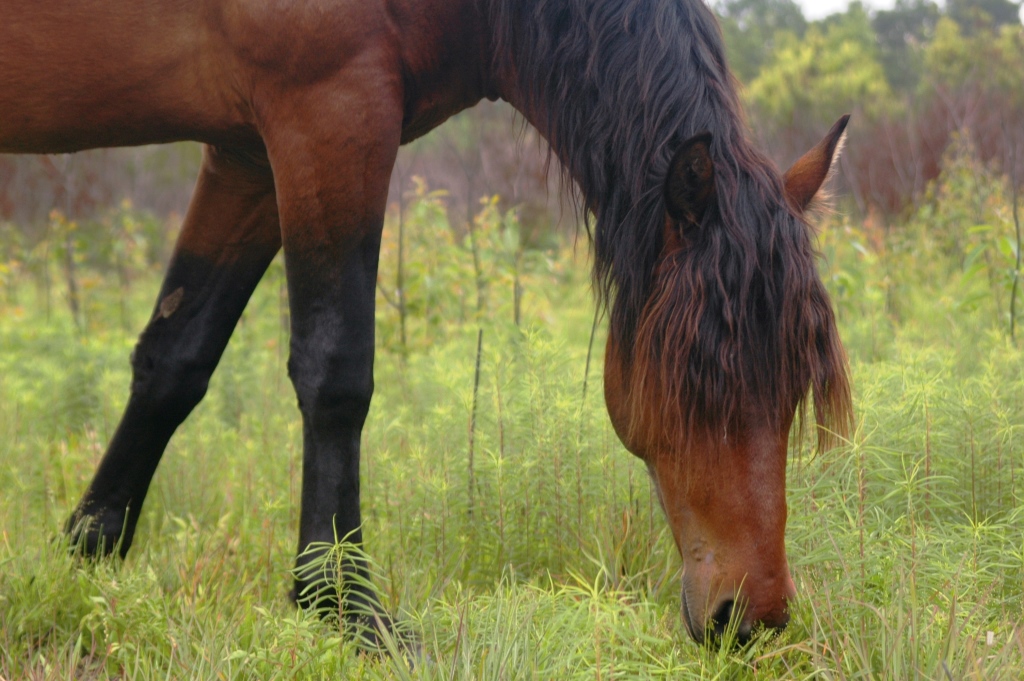By Saundra TenBroeck, Ph.D.
Associate Professor/Extension Horse Specialist
Department of Animal Sciences, University of Florida
Gainesville, Florida
If you examined the horse from a design engineering perspective, you would quickly realize they have been created to live in circumstances very different than most horse owners provide. Limited ability to interact socially, meals provided on a schedule convenient to the owner, forced exercise with little or no planned conditioning program are but a few of the adaptations modern day horses must routinely make. Most horses seem to adjust well but in some cases, the horse adapts by developing stable vices. Horse owners often follow routines robotically without considering the “nature of the beast.” As we develop management strategies, consideration should be given to the way the horse was designed.
Understanding normal behavior allows us to recognize abnormal behavior which can help us head off disease or dysfunction before it becomes serious. Observation of horses will give you a lot of information about what they are doing, how they are feeling and, often, their intentions. Horses are very expressive with their ears and their tails, much like a cat. Consider what your horse is “telling” you about their emotions like boredom, sadness, pain, sleepy, etc.

Horses are naturally designed to live in small groups, and to eat and move throughout the day and night. These are horses at the University of Florida Horse Teaching Unit. UF/IFAS Photo by Tyler Jones.
What you may call emotions are actually classical behaviors of horses. One key driver of natural behaviors of horses is that the species is designed to live in small groups, and to eat and move throughout the day and night. Given the opportunity, they will graze more than 60 percent of the day. Horses pass through three phases of sleep: 1) drowsy (standing at rest), 2) slow wave (sleep of the mind but standing, or lying sternally on their chest), and REM (Rapid Eye Movement during which the horse must lay down as there is no muscle tone). The bouts are relatively short and REM almost always happens at night. Horses do yawn, too
Because of their “nature,” horses can easily become bored. Boredom often is the result of lack of sufficient forage/roughage and insufficient activity. Some horses will develop vices or stereotypes when they are bored, such as wood chewing, weaving, stall or fence walking, wind sucking, etc. There is an old saying, “A horse by himself is in bad company.” Plenty of hay or grass, exercise, and a pasture buddy are the primary “happiness” promoters for horses.
Owners should focus on meeting a horse’s NEEDS. Animal Welfare experts call this the Five Freedoms.
- Freedom from hunger or thirst
- Freedom from discomfort
- Freedom from pain, injury and disease
- Freedom to express normal behavior
- Freedom from fear and distress
Horses are wired for fight or flight. Put in a scary situation, their natural tendency would be to react. We can “habituate” horses to situations that are not necessarily normal, by training. Horses do well with routine and normalcy. Much of what we think we know about horses is colored by our limited life experience. If we take the time to truly observe horses in their natural environment, we can begin to understand how horses “budget” their day into various maintenance and social activities. How much of what we do with and for our horses is what they need and how much is what we think they need? Are there management strategies that can be used to accommodate the needs of the horse and still allow us to operate within the limitations of our farm settings? Taking time to develop an understanding of classical equine behaviors, equine communication and how the horse senses their environment are a worthy investment. Armed with this knowledge, horse owners can explore and investigate natural horse behaviors, helping them develop powers of observation that are crucial to becoming better horsemen.
Suggested reading on this topic:
- When Good Horses Do Bad Things. ©2008 Cherry Hill
- Horse Industry Handbook – Chapters:
- 425 – Recognizing the Healthy Horse
- 1220 – Horse Behavior and Senses: Vision, touch, hearing & social behavior
- Economic Impact Study Indicates the Florida Equine Industry Remains Strong - April 12, 2024
- Management Strategies to Prevent Seasonal Impaction Colic in Horses - October 27, 2023
- Respond to the 2023 American Horse Council Economic Impact Study Survey - February 17, 2023

